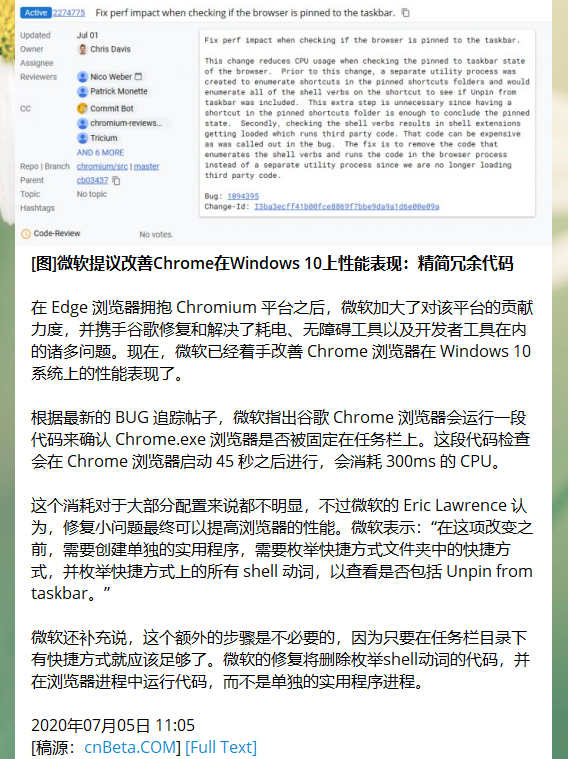
Telegram-news
Introduction
This is a easy-to-learn, flexible and standardized message fetching and pushing framework, especially for Telegram and Telegram Bot.
The target news source can be HTML page, JSON and XML. We also provide customized process for unknown data format.
Push the latest news to your channel or group once it happens!
Install
$ pip install telegram-news
Or, you can install by cloning this repository:
$ git clone https://github.com/ESWZY/telegram-news.git
$ cd telegram-news
$ python setup.py install
Prepare
It does not need much so that you can run your code anywhere.
First, ask @BotFather for a bot and bot token. After that, create a public channel or group, and remember chat id you just named. Do not forget to invite your bot into your channel or group and make it an admin.
You also need a SQL database. Any SQL database is OK. Especially, I recommend PostgreSQL.
Quick deploy on Heroku
Click 👇 button to deploy an example for free. Python environment and PostgreSQL database have been prepared.

After deployment, start the worker in "Resources" tab, and then you can see the effect in your channel/group, which contains both SCMP news and Wiki news at same time.
Usage
Those are 3 examples for you to understand how to use the framework.
Basic Example
import os
from sqlalchemy import create_engine
from sqlalchemy.orm import Session
from telegram_news.template import InfoExtractor, NewsPostman
bot_token = os.getenv("TOKEN")
channel = os.getenv("CHANNEL")
DATABASE_URL = os.getenv("DATABASE_URL")
engine = create_engine(DATABASE_URL)
db = Session(bind=engine.connect())
url = "https://en.wikinews.org/wiki/Main_Page"
tag = "Wiki News"
table_name = "wikinews"
ie = InfoExtractor()
ie.set_list_selector('#MainPage_latest_news_text > ul > li')
ie.set_title_selector('#firstHeading')
ie.set_paragraph_selector('#mw-content-text > div > p:not(p:nth-child(1))')
ie.set_time_selector('#mw-content-text > div > p:nth-child(1) > strong')
ie.set_source_selector('span.sourceTemplate')
ie.max_post_length = 2000
np = NewsPostman(listURLs=[url, ], sendList=[channel, ], db=db, tag=tag)
np.set_bot_token(bot_token)
np.set_extractor(ie)
np.set_table_name(table_name)
np.poll()
Typical results:
Advanced Example
import os
from sqlalchemy import create_engine
from sqlalchemy.orm import Session
from telegram_news.template import InfoExtractor, NewsPostman
bot_token = os.getenv("TOKEN")
channel = os.getenv("CHANNEL")
DATABASE_URL = os.getenv("DATABASE_URL")
engine = create_engine(DATABASE_URL)
db = Session(bind=engine.connect())
url_2 = "https://www.cnbeta.com/"
tag_2 = "cnBeta"
table_name_2 = "cnbetanews"
ie_2 = InfoExtractor()
ie_2.set_list_selector('.items-area > div > dl > dt > a')
ie_2.set_title_selector('header > h1')
ie_2.set_paragraph_selector('div.cnbeta-article-body > div.article-summary > p, '
'div.cnbeta-article-body > div.article-content > p')
ie_2.set_time_selector('header > div > span:nth-child(1)')
ie_2.set_source_selector('header > div > span.source')
ie_2.set_image_selector('div.cnbeta-article-body > div.article-summary > p img, '
'div.cnbeta-article-body > div.article-content > p img')
ie_2.max_post_length = 1000
np_2 = NewsPostman(listURLs=[url_2, ], sendList=[channel], tag=tag_2, db=db)
np_2.set_extractor(ie_2)
np_2.set_table_name(table_name_2)
np_2.poll()
Typical results:
Advanced Example for JSON and XML
The handle for JSON and XML are quite similar. You can convert XML to JSON by function telegram_news.utils.xml_to_json, and use NewsPostmanJSON and InfoExtractorJSON. Or, you can use NewsPostmanXML and InfoExtractorXML directly.
You should use key list to recursively route to the information you want.
import hashlib
import json
import os
from sqlalchemy import create_engine
from sqlalchemy.orm import Session
from telegram_news.template import InfoExtractorJSON, NewsPostmanJSON
from telegram_news.utils import xml_to_json
bot_token = os.getenv("TOKEN")
channel = os.getenv("CHANNEL")
DATABASE_URL = os.getenv("DATABASE_URL")
engine = create_engine(DATABASE_URL)
db = Session(bind=engine.connect())
url_3 = "https://www.scmp.com/rss/91/feed"
tag_3 = "SCMP"
table_name_3 = "scmpnews"
ie_3 = InfoExtractorJSON()
def list_pre_process(text):
text = json.loads(xml_to_json(text))
return json.dumps(text)
ie_3.set_list_pre_process_policy(list_pre_process)
ie_3.set_list_router(['rss', 'channel', 'item'])
ie_3.set_link_router(['link'])
ie_3.set_title_router(['title'])
ie_3.set_paragraphs_router(['description'])
ie_3.set_time_router(['pubDate'])
ie_3.set_source_router(['author'])
ie_3.set_image_router(['media:thumbnail', '@url'])
def id_policy(link):
return hashlib.md5(link.encode("utf-8")).hexdigest()
ie_3.set_id_policy(id_policy)
np_3 = NewsPostmanJSON(listURLs=[url_3], sendList=[channel], db=db, tag=tag_3)
np_3.set_extractor(ie_3)
np_3.set_table_name(table_name_3)
np_3.poll()
Typical results:
Parallel Program
If you use the same database and send to the same channel, you can simply joint each part of code block, and call poll() function simultaneously.
An example you can find in our Heroku deploy template repo:
https://github.com/ESWZY/telegram-news-getting-started/blob/master/main.py
Example Channel
A Telegram channel of basic example for English Wikinews: @wikinews_en (in English)
A Telegram channel for realtime earthquake warning powered by Telegram-news: @earthquake_alert (in Chinese)
TODO
Feedback
Feel free to contact with me if you have any question. Also welcome any contribute.
If you build a channel by this, don't forget to share that good news with us!
License
Licensed under the MIT License.

















